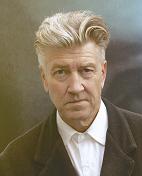 The connection between spirituality and art was once a given: think Dante or even the dark and edgy paintings of Breugel. In our day, art is understood to be secular, and the more edge, the more secular we expect the artist to be. A perfect example is The New York Times’s Sunday profile of David Lynch, in which the movie director talks about the fact that he has been practicing Transcendental Meditation most of his adult life. In an article headlined “David Lynch’s Shockingly Peaceful Inner Life,” the Times is astonished that Lynch’s meditation “has allowed him to unleash his imagination and be, in a word, weirder.”
The connection between spirituality and art was once a given: think Dante or even the dark and edgy paintings of Breugel. In our day, art is understood to be secular, and the more edge, the more secular we expect the artist to be. A perfect example is The New York Times’s Sunday profile of David Lynch, in which the movie director talks about the fact that he has been practicing Transcendental Meditation most of his adult life. In an article headlined “David Lynch’s Shockingly Peaceful Inner Life,” the Times is astonished that Lynch’s meditation “has allowed him to unleash his imagination and be, in a word, weirder.”
The director, whose work includes “Elephant Man,” “Blue Velvet,” and, most recently, “The Inland Empire,” admits that he, too, once considered meditation to be antithetical to gripping art: “The word ‘harmony’ would make me want to puke,” recalls Lynch. “Meditation would be a sickening thing to consider, because you want that edge to create.” But Lynch’s misapprehension dates to the 1960s, when TM devotees like the Beatles and Mia Farrow began importing the meditation discipline to the West.
To pretend that the connection between TM and creativity is still a shocker is a bit of a lazy peg for a piece. (And what’s more, the Times is late to the party: When Beliefnet interviewed Lynch a year ago, it was at the end of a months-long media blitz, during which Lynch talked about his embrace of TM.) What’s interesting is how evangelistic the raffish and reclusive director is about his practice, even putting his money, or at least his fundraising powers, where his mouth is: “The director’s goal is to raise $7 billion to help open seven ‘peace universities’ around the world,” says the Times.
The most compelling insight of all, however, is the news that Lynch was once addicted to milkshakes from Bob’s Big Boy.

